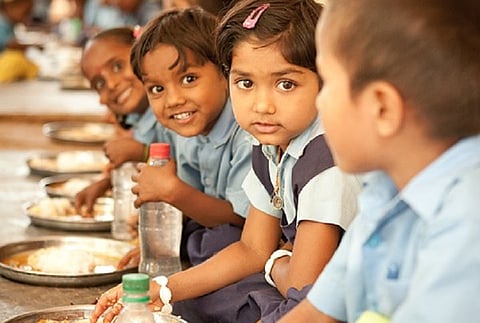

India has slipped to 102 on the Global Hunger Index, way behind its South Asian neighbours: Pakistan (94), Bangladesh (88), Nepal (73), Sri Lanka (66) and China (25). While India was 103rd in 2018 on the GHI, it was out of 119 countries surveyed, compared to a total of 117 countries this year. So, the country moving up to 102 cannot really be seen as an improvement.
The GHI is calculated annually to measure and track hunger at global regional and national levels. The higher a country’s GHI score, the worse it is. A score of 0 would indicate zero hunger in the country.
There are four indicators used to calculate a country’s position on the GHI: the share of its undernourished population; proportion of children under five years who are 'wasted' (i.e. have low weight for their height that reflects undernutrition); the number of stunted children under the age of five (i.e. whose height is low for their age, reflecting chronic undernutrition); and child mortality, that is, mortality rate of children below five years, which is indicative of a mix of inadequate nutrition and unhealthy environments.
Why India is low on GHI
One reason behind it seems to be the increase in wasting in children in India. While India has improved on the other three indicators, the prevalence of wasting in children under five years has increased from 2010 to 2019. While the prevalence of wasting in children was at 16.5 percent in 2010, it has increased to 20.8 percent in 2019. This is the highest reported by any of the countries surveyed in the report.
“Its child stunting rate, 37.9 percent, is also categorized as very high in terms of its public health significance (de Onis et al. 2019),” the report says. Further, just 9.6% of Indian children between 6 and 23 months of age are fed a minimum acceptable diet.
In terms of sanitation affecting nutrition, the GHI report notes that though drinking water sources have improved in 90% of households, 39% houses do not have sanitation arrangements, per a 2017 report. Further, despite the Swachh Bharat campaign, and construction of latrines, open defecation continues to be a practice in India. “This situation jeopardizes the population’s health and consequently children’s growth and development as their ability to absorb nutrients is compromised.”
‘Serious’ levels of hunger in South Asia
For 2019, “South Asia and Africa South of the Sahara have the highest 2019 GHI scores in the world, at 29.3 and 28.4, respectively,” the report says, which indicates “serious” levels of hunger. “In contrast, the 2019 GHI scores of Eastern Europe and the Commonwealth of Independent States, Latin America and the Caribbean, East and Southeast Asia, and the Near East and North Africa range from 6.6 to 13.3, indicating low or moderate hunger levels,” the report says.
In South Asia, the high GHI score is owed to high rates of child undernutrition. “The child stunting rate for the region is 37.6 percent, and the child wasting rate is 17.5 percent; both are the highest levels of any region in this report,” it says. The reasons behind this are reported to be poor infant and young child feeding practices, poor nutrition among women before and during pregnancy, and poor sanitation practices.
However, some countries have made significant improvements in child nutrition. Bangladesh is one, which reduced stunting in children to 40.2% in 2011 from 58.5% in 1997. The reason, according to a study were rising household wealth due to pro-poor economic growth and improvements in educating parents, health, sanitation and decreased fertility rates. “Nutrition sensitive” sectors like education, sanitation, and health also saw improvement, making this possible in Bangladesh.
Another country that has managed to reduce child stunting from 56.6% in 2001 to 40.1% in 2011 is Nepal. Here too, the contributing factors are increased household wealth, better maternal education, strides in bettering sanitation and implementing health and nutrition programs, including those targeting antenatal and neonatal health.
Climate change and increasing hunger
The report also makes an interesting – and alarming – connection between hunger in the world and climate change.
“The number of undernourished people in the world is increasing,” the report notes. “Extreme weather events are jeopardizing food production and food security and are only expected to increase in number and severity in conjunction with global climate change,” it explains, adding that violent conflicts in countries also contribute to rise in hunger levels.
“[…] we know many of the actions we must take to mitigate, prepare for, and adapt to climate change, but we have no global-scale experience to look back on as a guide or a guarantor of success. It will take humanity’s ingenuity, dedication, and perseverance to ensure that we collectively achieve Zero Hunger while tackling the unprecedented challenge of climate change,” the report concludes.
Zero Hunger by 2030 is the second Sustainable Development Goals laid down by the United Nations.